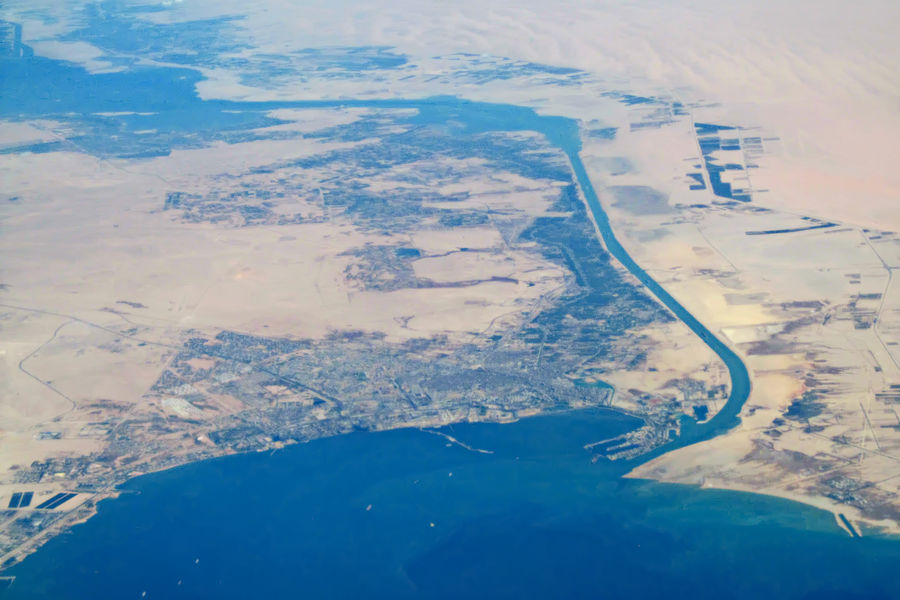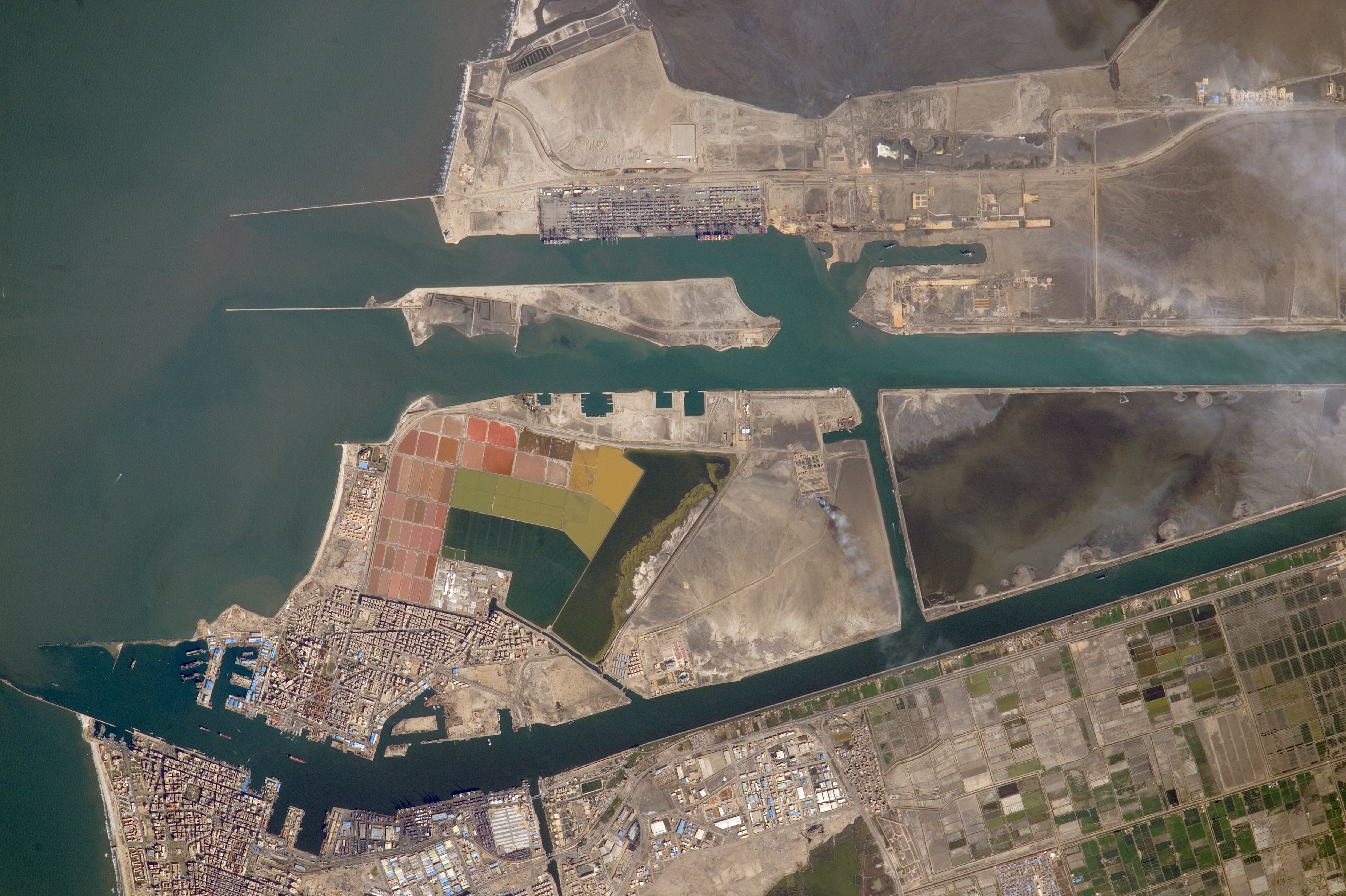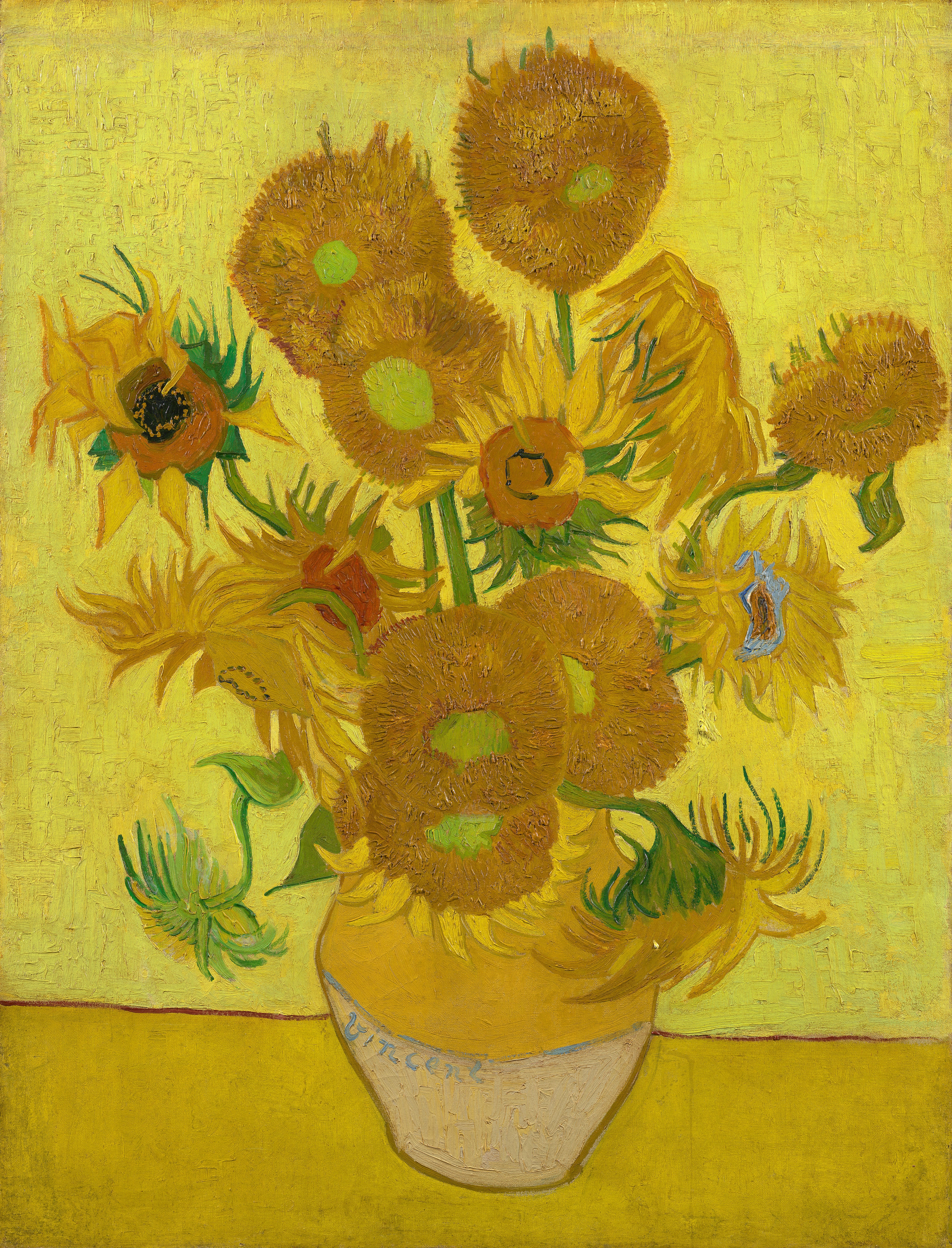|
Gezira Center For Modern Art
The Gezira Center for Modern Art, also known as the Egyptian Modern Art Museum, is an art museum for modern and contemporary art, located in Cairo, Egypt. It is part of the National Cultural Centre with the Cairo Opera House, on Gezira Island, just across the Nile on Qasr el-Nil Street west of downtown Cairo. Collections The museum displays more than 10,000 paintings and sculptures that show the development of the Egyptian art movement from the early 20th century pioneers through contemporary artists' works. There is a permanent collection of works by renowned Egyptian artists, such as: Mahmoud Sa'id, Ragheb Ayad, Mohammed Naghi, Gazbia Sirry, Inji Eflatoun, Tahia Halim, Abdel Hadi el-Gazzar and Ahmed Morsi. It also has a collection of works by Ibrahim Mohammed Khalil, one of the pioneering innovators of modern Arabic calligraphy in Egypt. The museum has been a participant in the Cairo Biennale. The Mahmoud Khalil Museum in Giza displays works by major international impression ... [...More Info...] [...Related Items...] OR: [Wikipedia] [Google] [Baidu] |
Gezira Island
Gezira is an island in the Nile, in central Cairo, Egypt. The southern portion of the island contains the Gezira district, and the northern third contains the Zamalek district. Gezira is west of downtown Cairo and Tahrir Square, connected across the Nile by four bridges each on the east and west sides, the Qasr El Nil Bridge, 15 May Bridge, Al-Gala'a Bridge and 6th October Bridge. Under 19th century ruler Khedive Ismail the island was first called "Jardin des Plantes" (French for "Garden of Plants"), because of its great collection of exotic plants shipped from all over the world. Landmarks * Cairo Tower (1960), the tallest concrete structure in Egypt, built near the Gezira Sporting Club. * Egyptian Opera House (1988), built near the Cairo Tower. * El Sawy Culture Wheel Centre (2003) ( ar, ساقية الصاوى), located beneath 15 May Bridge in Zamalek, one of the most important cultural venues in Egypt. * Gezira Sporting Club (1882), the oldest club in Egyp ... [...More Info...] [...Related Items...] OR: [Wikipedia] [Google] [Baidu] |
Monet
Oscar-Claude Monet (, , ; 14 November 1840 – 5 December 1926) was a French painter and founder of impressionist painting who is seen as a key precursor to modernism, especially in his attempts to paint nature as he perceived it. During his long career, he was the most consistent and prolific practitioner of impressionism's philosophy of expressing one's perceptions before nature, especially as applied to '' plein air'' (outdoor) landscape painting. The term "Impressionism" is derived from the title of his painting '' Impression, soleil levant'', exhibited in the 1874 ("exhibition of rejects") initiated by Monet and his associates as an alternative to the Salon. Monet was raised in Le Havre, Normandy, and became interested in the outdoors and drawing from an early age. Although his mother, Louise-Justine Aubrée Monet, supported his ambitions to be a painter, his father, Claude-Adolphe, disapproved and wanted him to pursue a career in business. He was very close to his mo ... [...More Info...] [...Related Items...] OR: [Wikipedia] [Google] [Baidu] |
Art Museums And Galleries In Egypt
Art is a diverse range of human activity, and resulting product, that involves creative or imaginative talent expressive of technical proficiency, beauty, emotional power, or conceptual ideas. There is no generally agreed definition of what constitutes art, and its interpretation has varied greatly throughout history and across cultures. In the Western tradition, the three classical branches of visual art are painting, sculpture, and architecture. Theatre, dance, and other performing arts, as well as literature, music, film and other media such as interactive media, are included in a broader definition of the arts. Until the 17th century, ''art'' referred to any skill or mastery and was not differentiated from crafts or sciences. In modern usage after the 17th century, where aesthetic considerations are paramount, the fine arts are separated and distinguished from acquired skills in general, such as the decorative or applied arts. The nature of art and relat ... [...More Info...] [...Related Items...] OR: [Wikipedia] [Google] [Baidu] |
Museums In Cairo
A museum ( ; plural museums or, rarely, musea) is a building or institution that cares for and displays a collection of artifacts and other objects of artistic, cultural, historical, or scientific importance. Many public museums make these items available for public viewing through exhibits that may be permanent or temporary. The largest museums are located in major cities throughout the world, while thousands of local museums exist in smaller cities, towns, and rural areas. Museums have varying aims, ranging from the conservation and documentation of their collection, serving researchers and specialists, to catering to the general public. The goal of serving researchers is not only scientific, but intended to serve the general public. There are many types of museums, including art museums, natural history museums, science museums, war museums, and children's museums. According to the International Council of Museums (ICOM), there are more than 55,000 museums in 202 countries ... [...More Info...] [...Related Items...] OR: [Wikipedia] [Google] [Baidu] |
Suez Canal
The Suez Canal ( arz, قَنَاةُ ٱلسُّوَيْسِ, ') is an artificial sea-level waterway in Egypt, connecting the Mediterranean Sea to the Red Sea through the Isthmus of Suez and dividing Africa and Asia. The long canal is a popular trade route between Europe and Asia. In 1858, Ferdinand de Lesseps formed the Suez Canal Company for the express purpose of building the canal. Construction of the canal lasted from 1859 to 1869. The canal officially opened on 17 November 1869. It offers vessels a direct route between the North Atlantic and northern Indian oceans via the Mediterranean Sea and the Red Sea, avoiding the South Atlantic and southern Indian oceans and reducing the journey distance from the Arabian Sea to London by approximately , or 10 days at to 8 days at . The canal extends from the northern terminus of Port Said to the southern terminus of Port Tewfik at the city of Suez. In 2021, more than 20,600 vessels traversed the canal (an average of 56 per d ... [...More Info...] [...Related Items...] OR: [Wikipedia] [Google] [Baidu] |
Port Said
Port Said ( ar, بورسعيد, Būrsaʿīd, ; grc, Πηλούσιον, Pēlousion) is a city that lies in northeast Egypt extending about along the coast of the Mediterranean Sea, north of the Suez Canal. With an approximate population of 603,787 (2010), it is the fifth-largest city in Egypt. The city was established in 1859 during the building of the Suez Canal. There are numerous old houses with grand balconies on all floors, giving the city a distinctive look. Port Said's twin city is Port Fuad, which lies on the eastern bank of the Suez Canal. The two cities coexist, to the extent that there is hardly any town centre in Port Fuad. The cities are connected by free ferries running all through the day, and together they form a metropolitan area with over a million residents that extends both on the African and the Asian sides of the Suez Canal. The only other metropolitan area in the world that also spans two continents is Istanbul. Port Said acted as a global city si ... [...More Info...] [...Related Items...] OR: [Wikipedia] [Google] [Baidu] |
Museum Of Modern Art In Egypt
Museum of Modern Art—Port Said is a modern and contemporary art museum, located in Shohada Square, in Port Said, Egypt. The town of Port Said has an international history of being a cultural crossroads and cosmopolitan community, located at the confluence of the Suez Canal and Mediterranean Sea, on the easternmost edge of the Nile Delta region. Collection The Museum of Modern Art in Port Said opened in 1995 and displays a collection of contemporary paintings, graphics, drawings, and ceramics created by Egyptian artists. See also * Index: Egyptian artists ;Note: The similarly named but separate modern art institution, the 'Egyptian Modern Art Museum' or 'Gezira Center for Modern Art,' is located at the National Cultural Centre near the Cairo Opera House, on Gezira Island Gezira is an island in the Nile, in central Cairo, Egypt. The southern portion of the island contains the Gezira district, and the northern third contains the Zamalek district. Gezira is west of downtown C ... [...More Info...] [...Related Items...] OR: [Wikipedia] [Google] [Baidu] |
:Category:Egyptian Artists ...
{{category explanation, artists from Egypt African artists Arab artists Artists by nationality +Artists Artists An artist is a person engaged in an activity related to creating art, practicing the arts, or demonstrating an art. The common usage in both everyday speech and academic discourse refers to a practitioner in the visual arts only. However, the ... [...More Info...] [...Related Items...] OR: [Wikipedia] [Google] [Baidu] |
Museum Of Islamic Ceramics
The Prince Amr Ibrahim Palace is a historical building in Cairo's Zamalek island, which is used as the Egypt's first ceramics museum, the Museum of Islamic Ceramics and as an art center. History and location The palace is located in the Gezira area, an island in the Nile, of Zamalek in Cairo. It was built on the orders of Prince Amr Ibrahim (1903–1977), member of the Muhammad Ali dynasty, in 1921. Prince Amr Ibrahim was the husband of Necla Sultan, granddaughter of Ottoman ruler Mehmed VI, also known as Vahideddin. The architect of the building was Garo Balyan, the youngest member of the Balyan family. The cost of the construction was about 200 million euros ($257 million). The palace was used by Prince Amr Ibrahim and his wife, Necla Sultan, as a summer residence. Style and layout The architectural style of the palace is neo-Ottoman and neo-Islamic. It also reflects dominant styles of the Muhammad Ali dynasty in terms of its architectural and decorative style. There ar ... [...More Info...] [...Related Items...] OR: [Wikipedia] [Google] [Baidu] |
El Sawy Culture Wheel
El Sawy Culture Wheel ( ar, ساقية الصاوى) (transliterated: Sakkiat Al-Sawy) is a cultural center on Gezira Island in the Zamalek district on central Cairo, Egypt. Named after its founder and owner, Abdelmoniem El-Sawy, it is considered one of the most important cultural venues in Egypt and receives more than 20,000 visitors each month. History El Sawy Culture Wheel was established in 2003 by Mohamed El-Sawy. Prior to its construction, its location, beneath the 15th May Bridge in Zamalek, was a shelter for homeless people and those struggling with addiction. El-Sawy named his center in honor of the five-part novel series: "El-Sakkia" () written by his father, Abdel Moneim El-Sawy, an Egyptian novelist and a former minister of culture. Locations and halls As of April 2009, El Sawy Culture Wheel has 3 branches: the main branch in Zamalek, a branch in Algeel Algadeed school, and a temporary branch in Qena. The main branch has eight halls: Wisdom hall, River hall, Earth hall ... [...More Info...] [...Related Items...] OR: [Wikipedia] [Google] [Baidu] |
Gauguin
Eugène Henri Paul Gauguin (, ; ; 7 June 1848 – 8 May 1903) was a French Post-Impressionist artist. Unappreciated until after his death, Gauguin is now recognized for his experimental use of colour and Synthetism, Synthetist style that were distinct from Impressionism. Toward the end of his life, he spent ten years in French Polynesia. The paintings from this time depict people or landscape painting, landscapes from that region. His work was influential on the French avant-garde and many modern artists, such as Pablo Picasso and Henri Matisse, and he is well known for his relationship with Vincent van Gogh, Vincent and Theo van Gogh (art dealer), Theo van Gogh. Gauguin's art became popular after his death, partially from the efforts of Art dealer, dealer Ambroise Vollard, who organized Art exhibition, exhibitions of his work late in his career and assisted in organizing two important posthumous exhibitions in Paris. Gauguin was an important figure in the Symbolism (arts), Sy ... [...More Info...] [...Related Items...] OR: [Wikipedia] [Google] [Baidu] |
Van Gogh
Vincent Willem van Gogh (; 30 March 185329 July 1890) was a Dutch Post-Impressionist painter who posthumously became one of the most famous and influential figures in Western art history. In a decade, he created about 2,100 artworks, including around 860 oil paintings, most of which date from the last two years of his life. They include landscapes, still lifes, portraits and self-portraits, and are characterised by bold colours and dramatic, impulsive and expressive brushwork that contributed to the foundations of modern art. Not commercially successful, he struggled with severe depression and poverty, eventually leading to his suicide at age thirty-seven. Born into an upper-middle class family, Van Gogh drew as a child and was serious, quiet, and thoughtful. As a young man, he worked as an art dealer, often traveling, but became depressed after he was transferred to London. He turned to religion and spent time as a Protestant missionary in southern Belgium. He drif ... [...More Info...] [...Related Items...] OR: [Wikipedia] [Google] [Baidu] |







